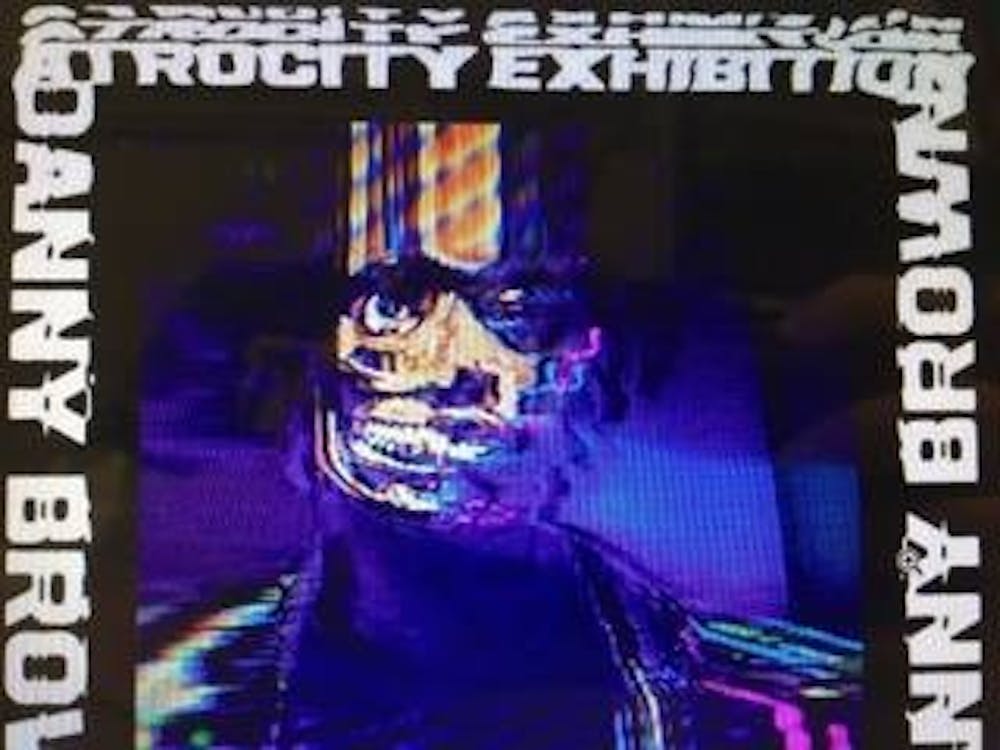Since dropping his first album, “The Hybrid,” an album that was critically divisive and largely ignored by his current core fan base, rapper Danny Brown has come a long way. Back with his fourth full length album, “Atrocity Exhibition,” Brown surpasses his previous albums in storytelling, production and lyrical delivery.
Both artistically and conceptually, Danny Brown’s breakout hit “XXX,” has set him into a lane of his own in the music world. The album's theme of desperation came through on every track. Although Brown’s high-pitched voice may have turned off many, at least on first listen, to others it was one of the most over-the-top albums they had heard in the genre. Brown rapped with the energy and drug habit of ODB with the sadness of Kurt Cobain. He constantly offers hysterical and clever one liners that, if you really sit and think about them, tell a deeply sad story of drug addiction, loss and overindulgence.
This album is his darkest, most serious, drug heavy and noisy to date. Themes of isolation, apathy and addiction, are carried out over some of the most alternative, heavy and distorted beats that hip-hop has heard. Paul White, the producer who gave “XXX” an entirely unique sound, returns with instrumentals that sample heavily from all genres of music, almost daring the album to be compared to works outside of its genre.
Five years after blowing up, Brown is now able to reflect on his manic, depraved and eccentric lifestyle. The first song, “Downward Spiral,” is part of a line in “XXX” where Brown talks about suicide: “Turning to these drugs, now these drugs turned my life/And it's the downward spiral, got me suicidal,” a reference to an album by Nine Inch Nails. Nail’s frontman, Trent Reznor, is known not only for his ferocious brand of industrial rock, but for his profoundly violent and dejected themes, all aspects Brown utilizes on the album.
The song “Really Doe,” featuring premiere lyricists Kendrick Lamar and Earl Sweatshirt, is the first part of the album that makes it feel like the party that Brown started on his EDM heavy album “Old.” The old school drums layered with fast paced drums act as a wave that carries each ferocious verse into the next, with Kendrick holding down the earworm of a hook. It is one of the few moments on the album to feature guest verses, and is by far the longest track, yet it is unskippable to the end.
Although there is nothing funny about Brown’s addiction, the song “Ain’t it Funny” features endlessly funny and catchy lines about what a terrible person Brown can be at times. Producer Paul White pairs a heart-pounding bass with horns that make it seem as if you are in Brown’s head as he is in the middle of a cocaine-fueled bender. Few can match the lyrical debauchery that is provided here, let alone touch an instrumental that is this frantic.
The energy on the frantic, grimey “Golddust” is a thematic continuation of the drug fueled state that Brown frequently finds himself in. Although the lyrical content is largely the same song-to-song, it couldn’t matter less, because Brown wants to fully immerse you in his life. He is putting his numerous flaws on display and it’s impossible to turn away.
Frequent variance in lyrical delivery and pace is enough to make the album feel cohesive, without Brown totally overwhelming you with the darkness in his mind. Visceral yet remarkably intellectual, he is able to seamlessly jump from themes of suicide, addiction and success, in a way that isn’t sappy or mindless. Every reference is meticulously arranged, and each flow is masterfully executed.
Brown’s vocal style sets him apart from every other rapper and the ad-libs, wordplay and energy make him endlessly charismatic, even if you disapprove of his lifestyle. Brown is entirely self aware and cognizant of his drug addiction. He frequently mentions that he not only expects to die, he welcomes it. He’s seen it all, coming from the poverty ridden inner-city of Detroit, where he was all but forced to sell drugs to keep going. His excess of sex and drugs makes him a sympathetic character that you are rooting for to get better, but if he doesn’t then it’s a hell of a life story to listen to.
The honesty that Brown delivers on this album, coupled with the frequently raw and unforgiving nature of his instrumentals, sets this album entirely apart from the rest. Brown makes you feel like you are in the hotel room with him while he is smoking his sadness away. It is hard to see how anyone could match the level of character that Brown has in spades in all aspects of the album. It is refreshing to hear rappers like Brown and Lamar be honest about issues of mental illness, as topics of health and happiness have often been ignored by the mainstream. He might be “Old,” but Brown has the ferocity of a rapper half his age, and comes with the stories of a man who has lived more than his fair share of life.
You can also catch Danny Brown at the Fillmore SIlver Spring on November 1st.





